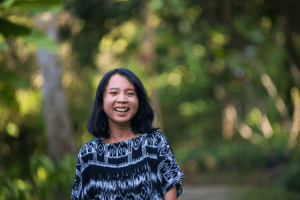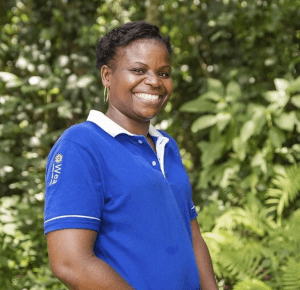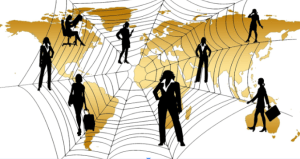If women are in positions of political power, then there is a greater chance that there will be more support towards environmental protection. In Gender Equality and State Environmentalism by Kari Norggard and Richard York, they found that with more women in Parliament, then environmental treaties are more likely to be ratified (Norgaard, York 506). Through various studies, they show a contrast between men’s and women’s views for “environmental concern, values and perceptions of environmental risks” (Noorgard, York 508). Across the world, women and girls have more environmental awareness than boys and men. Regarding environmental values and beliefs between genders, it was concluded that “German and Russian girls had higher levels of environmental awareness than boys; in Australia, girls exhibited greater environmental responsibility than did boys when socioeconomic levels were held constant and in Norway…” it was found that “boys and girls were equally concerned about the environment” but “…girls were more likely to join environmental organizations” (Norgaard, York 509). It could be stated that through socialization, women are typically looked at as caretakers, providing a nurturing, family-oriented nature (Norgaard, York 508). Therefore, the connection between women, nature, and overall environmental concerns are more interconnected than that of man (Noorgard, York 508). Since women are more connected to nature, they are more likely to support the protection of our environment. Whether it is toxic substances poisoning our planet, or nuclear power, women are more likely to take a stand and consider the risks that threaten our people and earth (Noorgard, York 508).
Women make up the majority of both grassroots movements and environmental organizations which could be linked to the “gendered divisions of labor, land and other resources,” which means that “women have been uniquely and disproportionately affected by ecological destruction” (Noorgard, York 507). Due to the sexism, as well as poverty and racism that plagues our country and around the globe, high-powered, dominant groups and individuals subject the people below them to the destruction of the environment and its hazardous effects (Noorgard, York 510). It has been shown that the patriarchy and capitalism are both suppressive, ecologically unsustainable and exploit both women and the environment.
After reading about how women are the majority of grassroots efforts and environmental organizations, I looked into women in positions of political power and their influence on the environment. I came across an organization called Women’s Earth Alliance (WEA). The WEA is led by women, and they use grassroots solutions to help protect the environment as well as strengthen communities. The WEA recognizes that women are pivotal in rising against climate change. One woman from Central Kalimantan, Palangka Raya, Indonesia, helps educate and raise awareness on plastic pollution, climate action, forestry problems and helps to coordinate events of Dayak traditions and culture in order to help cultivate pride (WEA). Her name is Sumarni Laman and she is the manager at Ranu Welum for communications and public relations, a youth coordinator for Ranu Welum, a Field Coordinator of the Heartland Project and Guardian of Kalimantan Rainforest (WEA). Within The Heartland Project, Laman was able to bring in over a thousand people to help plant more than 2,500 trees (WEA). The trees are planted on land that was previously forest but was destroyed from burning or it was mined (WEA). Below is an image of Sumarni Laman.

Another woman from the Women’s Earth Alliance is Rose Wamalwa who is the East African program director where she is a Fellow for the Global Women’s Water Initiative (WEA). To this day, Wamalwa works for climate justice for women in Uganda, Tanzania, and Kenya (WEA). Wamalwa also founded an organization called Women in Water and Natural Resources Conservation (WEA). This organization helps to uplift and improve the lives of women, girls and vulnerable children in East Africa by helping them gain access to health care, education and “capacity building for economic empowerment” (WEA). Wamalwa is deeply interested and invested in women’s empowerment, leadership, community and social entrepreneurship (WEA).
Below is an image of Rose Wamalwa.


As stated above from Gender Equality and State Environmentalism by Kari Norggard and Richard York, women are disproportionately affected by environmental degradation, and “make up 80% of the world’s climate refugees and are 14 times more likely to die in a climate-related disaster than men” (WEA). The imagery above shows a representation of the interconnection of women across the world. The web indicates that women are standing together and are connected to each other as well as nature, fighting for environmental justice and working towards equality within the patriarchal and capitalist world we live in.
Works Cited:
Norgaard, Kari., & York, Richard. Gender Equality and State Environmentalism. Gender & Society. August. 2005. https://pages.uoregon.edu/norgaard/pdf/Gender-Equality-Norgaard-York-2005.pdf
Women’s Earth Alliance. Womens Earth Alliance, Earth Island Institute, 24 Jan. 2023, https://womensearthalliance.org/.

Hey Sam,
I find it interesting how the Grassroots Movement keeps coming up in conversation. I believe it is one of those things that’s just relevant to every ecofeminist conversation. The final statistic that you included was honestly shocking to me. I had no idea that many women were susceptible to climate-change disaster.
The first thing I noticed about the images of Laman and Wamalwa is their brightly colored blue shirts. According to color theory, blue is representative of wisdom, sensitivity, and freedom. Considering all of the hardships they faced growing up, and now in this fight for a better world, I believe that says a lot. It was probably done purposefully, but there’s something about it that makes me immediately trust them and want to help fight their cause. As you stated in the last paragraph, we are all interconnected. This fight is not one woman’s but all women’s.
Hey Sam!
I really liked reading about WEA, and how the women in the organization take on different educational roles that are important to help fight the climate crises that we are currently facing.
The women in the pictures that you found and posted, look happy and satisfied with how they are helping the organization. I really like that you mentioned the exact issues that they are focusing on through their education work like plastic pollution-very important! Climate action-VERY important, and forestry issues-also important.
I am glad that healthcare is an issue that isn’t being ignored! Too many women are neglected and not given proper healthcare in East Africa, especially when there are a lot of viruses that can easily spread and impact the lives of many innocent women and children. I know that Doctors Without Borders do a lot of important work for 3rd world countries who don’t have as much as other countries. I wonder if midwifes go? Something to research for sure! Women need birthing resources as well! I hope that this organization continues to thrive and change the lives of many women who deserve it! It’s organizations like the one you mention in the post, that pay attention to how women are being treated, and give them resources to use to push back against capitalism, and oppression, and environmental degradation.